Toxic Water: Across Much of China, Huge Harvests Irrigated with Industrial and Agricultural Runoff
The dirty truth about the world’s largest grain producer.
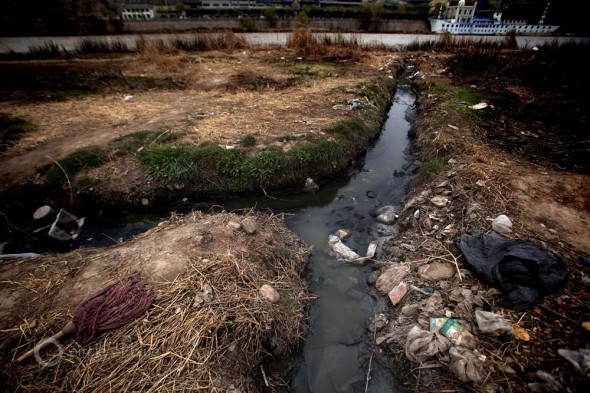
By Nadya Ivanova
Circle of Blue
JINAN, Shandong — The horizon gleams with a golden hue from the wheat fields that spread in all directions here in Shandong, a prime food-growing province on the lower reaches of the Yellow River. As hundreds of farmers spread the wheat like massive carpets to dry on country roads, combine machines are busy harvesting the grain. The same afternoon that the wheat harvest is finished, farmers will already be planting corn and other crops. This is how China feeds 1.4 billion citizens and millions of livestock.
–Farmer in Shandong Province
The seeds of the economic miracle that have lifted China to the world’s second-largest economy are in the farm fields and tumbledown villages that each year grow the nearly 600 million metric tons of food that sustain public trust in the country’s dramatic transition.
Yet the ample harvest also comes with significant public health risks, as a farmer here explains.
Damp with sweat, dust, and chaff, he pulls a plastic hose into a water pump that is powered by a truck with a belt-drive. The moment the engines roar, the ingenious makeshift machine fills the hose with turbid water from the nearby canal where a pharmaceutical factory has just dumped its rancid effluent.
“There’s no water source except for this dirty water,” the farmer says. “We have to use it.”
When the water turned black last month, he adds, most of the crop died after being irrigated with it — and what did not wither was sent to the market.
The farmer’s plight underlies a dirty truth about China’s fast development: the nation’s rivers, lakes, and falling water tables are enduring deficits of clean water that often force farmers to grow food using water that is tainted with heavy metals, organic pollutants, and nitrogen. Much of China’s water is so contaminated that it should not even be touched, yet tremendous amounts of the grains, vegetables, and fruits that are served in homes and restaurants, as well as textiles that are sold in markets, are irrigated with untreated industrial wastewater.
Contaminated Food
Crash programs to build highways, railways, airports, modern manufacturing bases, and other equipment have distinguished China for a generation. The country has not, however, launched any similarly comprehensive or sustained programs to clean up its filthy water, though reforms may be on the horizon.
Water and soil pollution in China are so prevalent that the nation’s farm productivity, its economy, and the people’s health are at risk as modernization, urbanization, and food demand are steadily increasing.
Furthermore, China’s Ministry of Land and Resources estimates that heavy metal pollution destroys 10 million metric tons of grain and contaminates another 12 million metric tons annually, incurring billions of dollars in direct economic losses each year as China struggles to satisfy the evermore-sophisticated diets of its growing population. With more and more Chinese moving into the middle and upper classes each year, so increases their ability to afford meat products like beef and pork, which are extremely water intensive as they must be fed substantial amounts of grains.
Meanwhile, as much as 10 percent of China’s rice, the country’s staple food, may be tainted by poisonous cadmium, a heavy metal that is discharged in mining and industrial sewage, according to scientists at Nanjing Agricultural University.
Food safety is a deep concern among Chinese citizens, a matter of national significance as old as the country itself. After years of high-profile scares — deadly melamine milk, recycled “gutter oil,” fake beef, and exploding watermelons, among others — food safety scandals are producing public ridicule and ire in a political system that has vowed to serve the people. As the public has called for the country to dramatically strengthen its environmental safeguards, authorities have begun setting nationally significant standards for water, soil, and food to curb the grimy side effects of sizzling economic growth.
–Fan Mingyuan
Water Resources Research Institute
“Crop security is the number one problem in the nation,” Fan Mingyuan, an expert at the Water Resources Research Institute of Shandong Province, told Circle of Blue. “It’s a national security problem.”
Agriculture is a vital industry in China, employing more than 300 million farmers and feeding a rapidly growing nation, still haunted by memories of severe famine and poverty during the 1950s and ’60s. And as China ranks among the global firsts in output of rice, wheat, potatoes, tea, cotton, meat, and other crops, the security of its food supplies could have significant global implications as well.
Soil and Water Pollution
While years of food scandals have focused public attention on factories and markets, few have looked at the source of the food chain — soil and water.
For instance, one-fifth of the Yellow River, northern China’s lifeline, should not be used for drinking, energy production, or irrigation; about 40 percent of the Hai River, which supports major food-producing areas in the northeast, is considered unusable. In fact, nearly 15 percent of China’s major rivers are not fit for any use, and more than half of the groundwater nationwide is categorized as “polluted” or “extremely polluted,” according to government statistics.
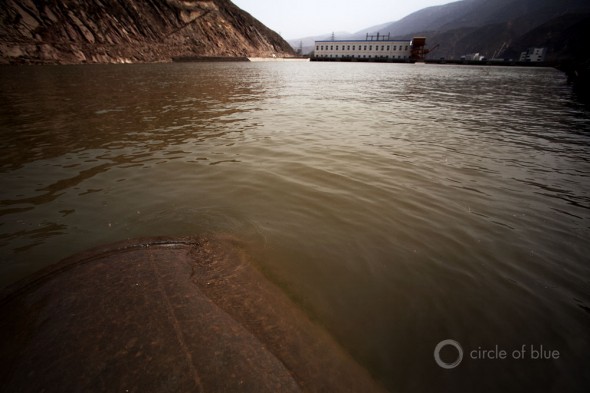
Pollution is such a major driver of water scarcity in China that experts have given it a special term, shui zhi xing que shui, or literally “water-quality-driven water shortage.”
Moreover, China’s pollution hotspots are occurring in the places where economic growth is the highest and water resources are under the most stress — China’s dry northern breadbaskets and its biggest manufacturing hubs in the south and east.
–Hu Kanping
Chinese Ecological Civilization
Research Promotion Association
Nearly 10 million of China’s 120 million hectares (25 million of 295 million acres) of cultivated land have been polluted, and more than 133,000 hectares (330,000 acres) have been infiltrated or destroyed by solid wastes, according to official statistics. Furthermore, half the soil in southern manufacturing cities is reportedly contaminated with cadmium, arsenic, mercury, petroleum, and organic matter.
“I have seen farmers in Hebei use contaminated water, because there’s nothing else to use. Farmers won’t eat what they produce. They have fields for themselves and fields for the market,” said Hu Kanping of the non-profit Chinese Ecological Civilization Research and Promotion Association, based in Beijing. “This is a very serious problem, not just for farmers but also for everyone else. It’s not just about water safety; it’s about food safety as well.”
Non-point Source Pollution
Spills and other pollution incidents from industrial and sewage treatment plants in recent years have drawn attention to some of China’s dirtiest rivers and lakes. Protests calling for dramatically strengthened environmental safeguards in China are now occurring with more frequency, signaling an awakening of both the public and government’s conscience about the environment.
But few realize that more than half of China’s water pollution comes from agriculture itself: fertilizers, pesticides, and livestock waste that are carried into lakes, rivers, wetlands, coastal waters, and underground aquifers by rainfall and snowmelt.
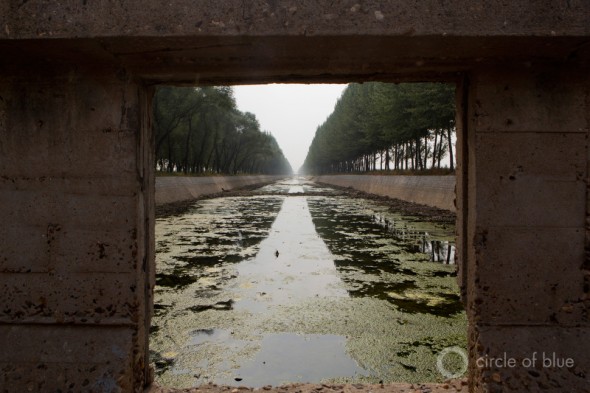
This runoff is called agricultural non-point source pollution, because it cannot be traced back to one source, like pollution from a factory can be. Agricultural non-point source pollution is the dominant source of water pollution in China, and it also serves to increase soil erosion and reduce the productivity of the land. This kind of pollution has proved difficult to control globally, and most technical measures in China are focused on prevention rather than treatment.
The cruel irony is that China has become the largest producer and consumer of fertilizers and pesticides in the world, according to China’s Journal of Arid Land. Likewise, giant pig and poultry farms have also developed rapidly to satisfy the nation’s growing demand for meat: in 2002, the total livestock waste was more than four times greater than the production of industrial organic pollutants.
In fact, animals produce about 90 percent of the organic pollutants and about half of the nitrogen in China’s water, according to Wang Dong, a senior expert at the Chinese Academy for Environmental Planning.
“China is developing too rapidly,” Wang told Circle of Blue. “It took Western countries 100 and more years to develop to this level — it took China 30 years. Our population is too big, and certain problems cannot be avoided when you have such big population.”
Effects on the Economy
Just how much damage China’s soil and water pollution has brought to people’s health, the land’s productivity, and the state’s economy is not completely clear, say authorities both inside and outside the country.
China’s attempt to introduce a “green GDP” in 2004 put the cost of the environment at about 3 percent of economic growth. According to the World Bank, the costs of environmental degradation and resource depletion in China approached 10 percent of GDP over the past decade — of which water pollution accounted for 2.1 percent and soil degradation for 1.1 percent — though this estimate only measured the impact on human health.
Central government authorities have acknowledged industry, agriculture, and cities as sources of pollution and have given a much bigger role to environmental regulations in China’s development plan through 2015. Recent reforms have introduced stricter targets for reducing major pollutants, and with promising results.
The central and provincial governments have invested more in cleaning up rivers and lakes and in reusing recycled water in homes, industries, and even on farm fields. They are also using award payments to persuade local authorities and businesses to take action on environmental programs and other initiatives, such as subsidizing biogas equipment in pig farms and spreading the residual on fields as a more natural alternative to synthetic fertilizers.
Eastern Chinese cities are also clamping down on where businesses can build pig farms, manufacturing factories, and power plants, in hopes of keeping nearby water bodies clean.
Meanwhile, foreign companies are rushing to cash in on cleaning up China’s pollution, as the Chinese government plans to invest $US 63 billion in the water-treatment sector during the current 12th Five-Year Plan period (2011-2015). Though investment in urban wastewater treatment is becoming more common, there is also increasing interest from the private sector in investing in solutions to rural pollution.
As a sign of new attitudes to food, fledgling companies offer to provide an organic certification, printing up organic or “green” food labels — for a fee. Even though agriculture officials promote organic, “green” food, and “no-harm” programs to reduce the use of harmful chemicals in food, there are still many reports of cheating and violations.
Economy & Environment At Odds
Because citizens are calling more attention to the links between pollution and deteriorating public health, independent authorities note that the increased activity is elevating the environment — and water issues in particular — to a much higher political priority in China.
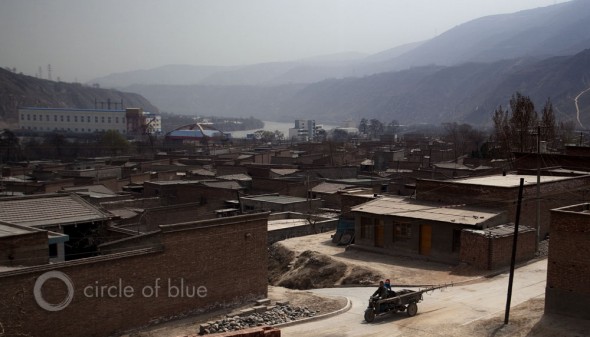
But controlling agricultural pollution will prove difficult, given that China has such an eclectic mix of farmscapes — from rural households to collective units to those that are state-owned, —since the country’s economic opening in 1978 when many farmers divided up their farmland. Not to mention that, in a country notorious for its weak local enforcement of environmental regulations, central efforts are often at odds with the economic interests of local businesses, governments, and farms.
–Wang Dong, senior expert
Chinese Academy for Environmental Planning
China’s overwhelming local protectionism of polluting industries unveils a tight alliance between officials and local industries, often triggered by the pressure on local authorities to show progress in developing the economy. In the years of state-run market economics, local governments prioritize industrial growth, often at the expense of environmental regulation.
As environmental problems persist, social frustration builds up over the lack of effective alternative channels for complaint, the weak local enforcement of environmental laws, and the lack of accountability by the private sector. Many local protests against pollution incidents have thus focused on the strong state-corporate ties that hamper real reforms on the ground.
“All the environmental problems in China are political problems,” Hu Kanping told Circle of Blue. “And water pollution is more difficult to address than air pollution. In many areas, there’s resistance from farmers and local governments to address this problem, because it will affect their irrigation; it will raise their water fees and slow local GDP growth.”
Photos by Adam Dean, as well as Circle of Blue reporters Aaron Jaffe and and Keith Schneider.
Choke Point: China is an on-going Circle of Blue series, produced in partnership with the Wilson Center’s China Environment Forum. Through frontline reporting, the project finds new and powerful evidence of a ruinous confrontation between water, food, and energy that is visible across China and is virtually certain to grow more dire over the next decade. Choke Point: China is part of Global Choke Point, which is uncovering new data and strategic narratives about water, food, and energy in the world’s most vulnerable regions.
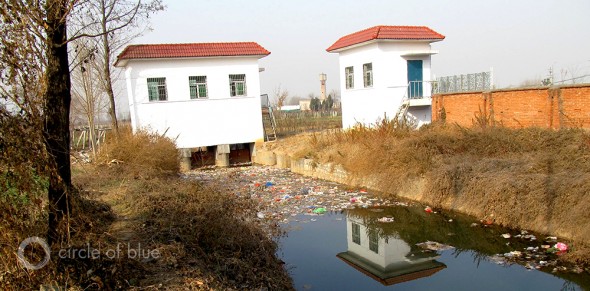
, a Bulgaria native, is a Chicago-based reporter for Circle of Blue. She co-writes The Stream, a daily digest of international water news trends.
Interests: Europe, China, Environmental Policy, International Security.

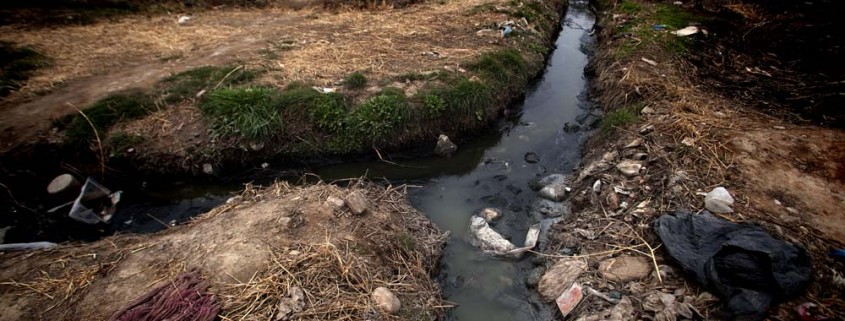
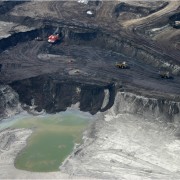
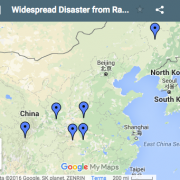
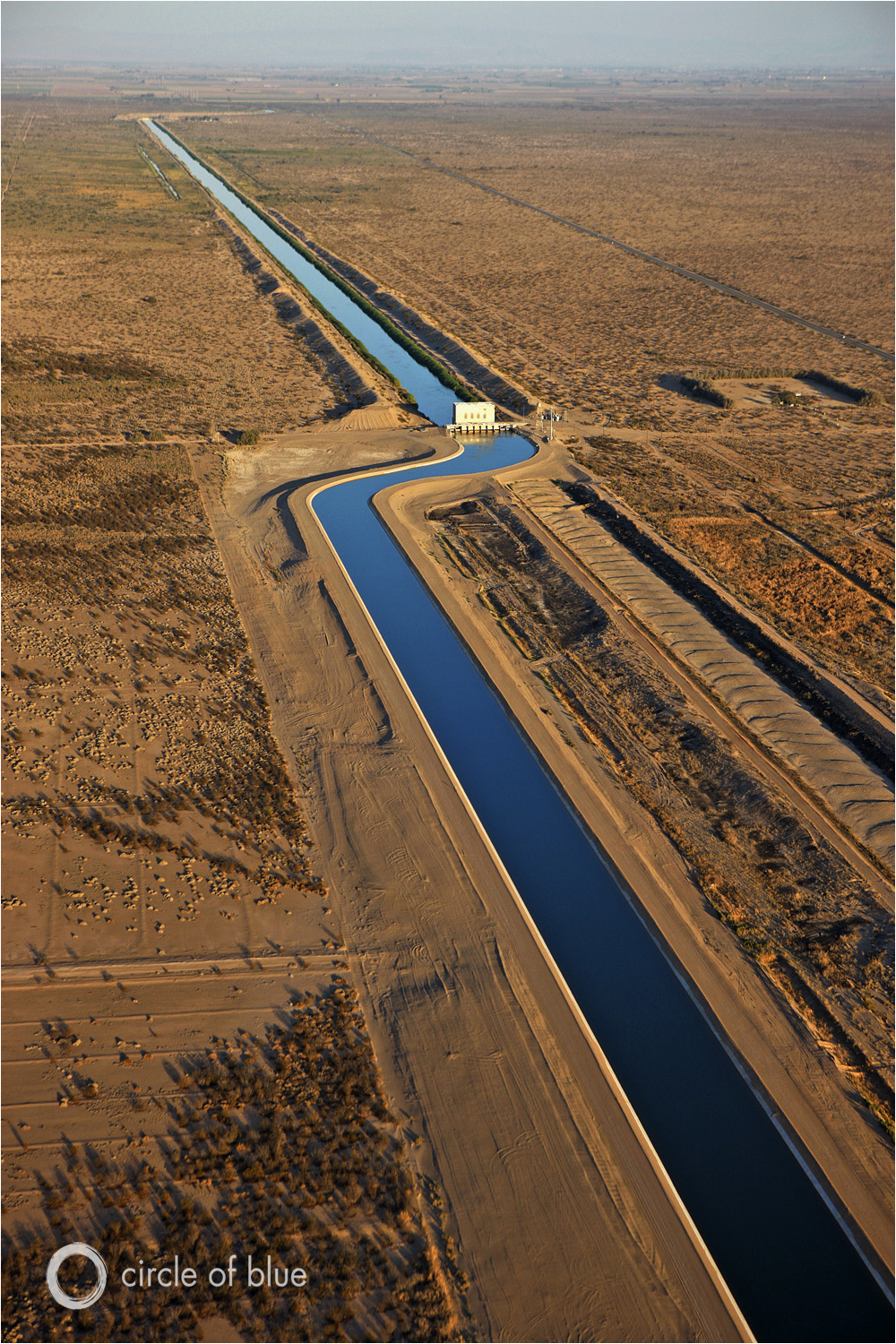

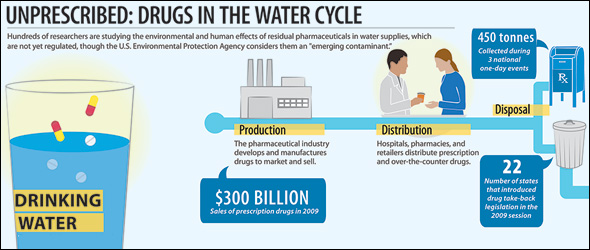
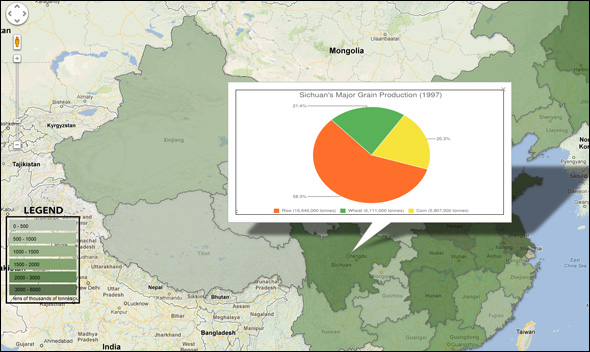


My wife and I taught at Baoding University from 2002 to 2010. We traveled widely in China while there, and stayed in the countryside while doing so. The surface signs of water shortage and pollution were everywhere increasing. One artifact was available continuously during any trip over the 150 Kilometers between Baoding and Beijing by car or train. Numerous long bridges had been built to transport traffic over several river courses along the route. Not once during our stay did we see any water under the bridges, or in the reservoirs behind dams near China’s capital. Less visible, but much more dangerous, was the rapid fall of the water table. The first analysis of that problem stated that water tables in Hebei were declining at two meters per year. More recent calculations indicate that the correct rate is three meters per year. The result is that almost every ‘upper class family’ (A family capable financially of sending a child to university.) had a shallow (!0 meter deep) well in their courtyard that had gone dry about 2002. Another deeper well (about 10 meters) that had gone dry about 2007. The home in 2009 were receiving water from a village deep well (about 250 meters) and the water from that well was beginning to get murky, an indication that it was going to fail soon. The uncle of one of our students, a village official, said in answer to my question about water for the large settlement where he lived, ‘It is hopeless.”
不可否认污染确实存在,但仅限于部分紧邻工业区的地方,中国还没有到处是工厂。生活垃圾也确实存在,但对粮食的污染微乎其微,基本可以忽略不计。因此我可以肯定污染的农产品不足我国粮食总量的百万分之一。如果作者是想表示一种警示,我们可以表示理解,但其行为在一定程度上是对我国农民的不尊重和对我国的抹黑,我强烈要求作者对自己的行为进行道歉和澄清!
(Quick Google translation: “Undeniable pollution does exist, but only in the part close to the industrial area — China has not everywhere a factory. Garbage does exist, but minimal contamination of food, basically negligible. I can definitely say contaminated agricultural products is less than one-millionth of China’s total grain output. If the author is trying to send a warning, we can understand this to some extent, but overall this article discredits and has a lack of respect for our farmers. I strongly urge the author to apologize for her actions and to clarify!”)
I won’t put anything in my mouth that comes from China! I try not to buy anything made there either. I don’t support polluters or dictators.
Wouldn’t knowingly eat or drink anything from Chinese ingredients. Unfortunately our labelling laws are so polluted with corruption, they compare with the pollution of Chinese agricultural.
Look at an ingredients label, if it says ground ginger or garlic, it is most likely from China!
My little English village shop sells garlic from China! What the fracking hell is going on.
Cheap cr@p food that importers love.
The non-point source pollution from agriculture is a horrible cycle that even the US has problems with, though China’s probably contains magnitudes more pesticide and fertilizer residue at this point. Here’s hoping that China will start putting money into research and installation of best management practices for stormwater and ag soon.